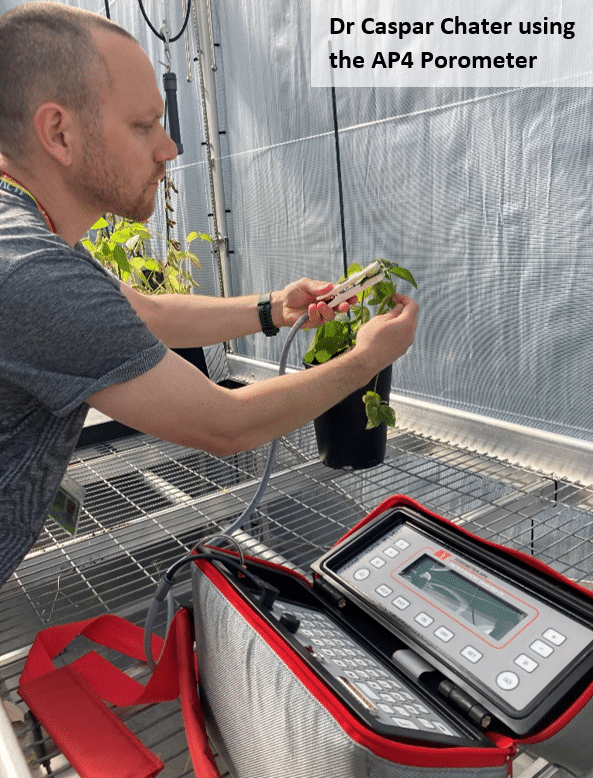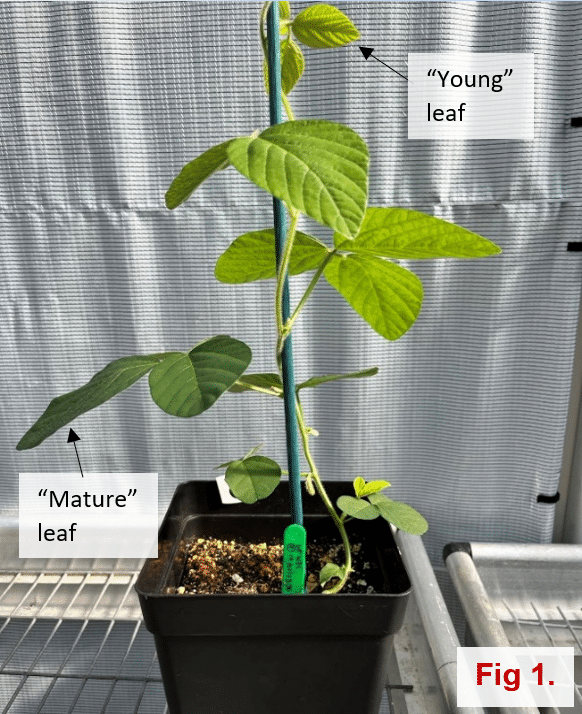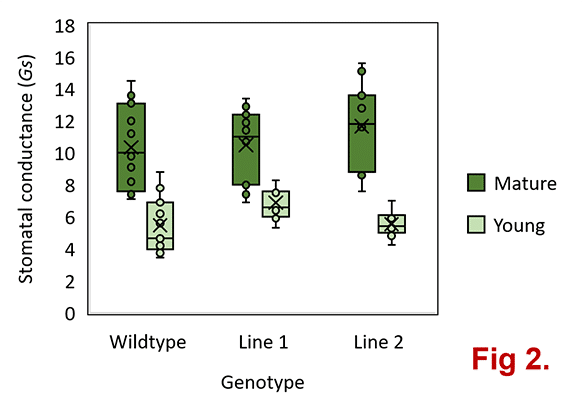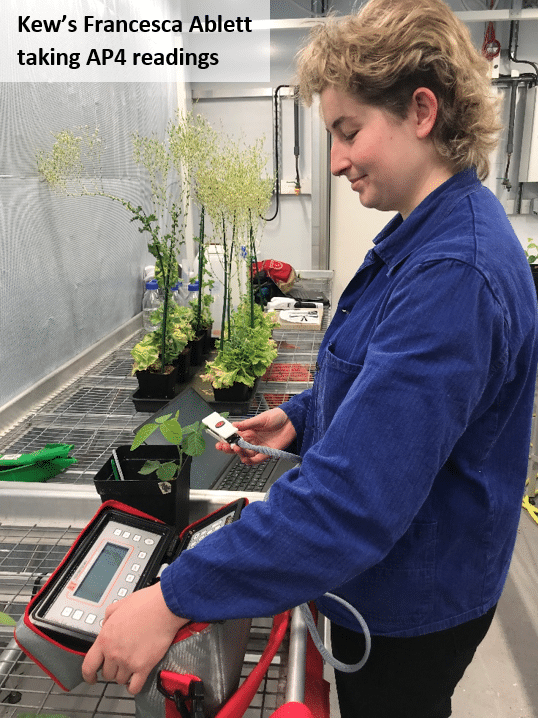The Royal Botanic Gardens, Kew (Kew) houses the largest and most diverse botanical and mycological collections in the world, and their research staff’s scientific mission is to fully develop the information about, and potential uses of, plants and fungi.
A recent research project has seen Kew’s Dr Caspar Chater (Senior Research Leader) and colleagues use Delta-T Devices’s AP4 Porometer to explore the stomatal responses of two drought-tolerant Soybean lines.
Stomata are pores found on leaf surfaces which play a crucial role in gas exchange and water regulation. Stomatal conductance (Gs), which is the rate at which stomata open and close, can be used as a quantitative measurement of a plant’s water and carbon dioxide regulation.
Experiment overview
Dr Chater says,
“We are interested in two novel soybean lines which exhibit a reduced stomatal density phenotype. Studies have shown that plants with reduced stomatal density have increased water use efficiency and drought tolerance.
In the context of both climate change and the need to decrease agricultural inputs, research into drought-tolerant crops is essential. Comparing stomatal conductance between low-stomatal density lines and a wildtype control is essential in understanding the physiological consequences of these changes.”
He continues,
“We have been using the AP4 Porometer in an important preliminary stage of our soybean research – the aim of which is to answer two questions which will inform future physiological and yield experiments on these plants.
Those questions are:
Do we see a difference in stomatal conductance between leaves of different maturity?
and,
how many biological replicates (number of plants, and number of leaves) should we grow?”

Kew’s use of the AP4 Porometer
Dr Chater explains their approach to taking readings,
“In our labs at Kew it is standard practice to sample the central trifoliate at the 3rd node when carrying out stomatal conductance measurements. This approach allows for consistent and longitudinal analysis of a specific leaf’s response.
The 3rd leaf node can be considered representative of the plant’s physiological state and can provide a snapshot of the overall plant physiology. Older leaves may be undergoing senescence, and younger leaves may be affected by apical dominance.”
Measurement regime
During the preliminary stages of their soybean experiment Dr Chater’s team took 5 readings on a young leaf and 5 readings on a mature leaf (Figure 1 below) and sampled 3 plants from each genotype. Results from the experiment are shown in Figure 2 below.


The team’s findings
Mature leaves exhibit significantly higher stomatal conductance than young leaves.
Dr Chater says,
“For all 3 genotypes, we observed that mature leaves exhibit significantly higher stomatal conductance when compared to young leaves. This indicates either an increased stomatal density, or an increased rate of gas exchange and photosynthesis in mature leaves. To answer this question in future experimentation, we will produce stomatal impressions at each timepoint.”
Mature leaves exhibit significantly higher variation in stomatal conductance than young leaves.
He continues,
“Interestingly, the mature leaves displayed significantly higher variation compared to young leaves of the same genotype. This increased variation may be attributed to the accumulated stress responses or developmental signals over time. The observed variation in mature leaves may have contributed to the lack of significant differences between the genotypes’ stomatal conductance in mature leaves. Increasing the number of plants sampled may lead to the detection of more subtle differences and provide a more robust statistical analysis.”
Line 1 exhibits significantly higher stomatal conductance than wildtype in young leaves.
He further explains,
“In young leaves, Line 1 displayed significantly higher stomatal conductance compared with wildtype plants, suggesting a potentially higher stomatal density. This observation, which indicates increased water loss through transpiration, challenges our expectation for Line 1 to be a candidate as a drought-tolerant soybean. This is inconsistent with the reduced stomatal density phenotype previously observed in Line 1 and Line 2, and thus suggests the phenotype is displayed at a later stage of leaf development. Consequently, we have adjusted our sampling strategy to include leaves at every other node throughout the full experiment.”

Working with the AP4
Dr Chater concludes,
“The consistent data that the AP4 Porometer has produced through this preliminary stage of the research has been important to the success of the project, and the instrument’s effective in-field calibration system has given us high confidence in the readings it has given.”

Visit the AP4 Porometer web page.

